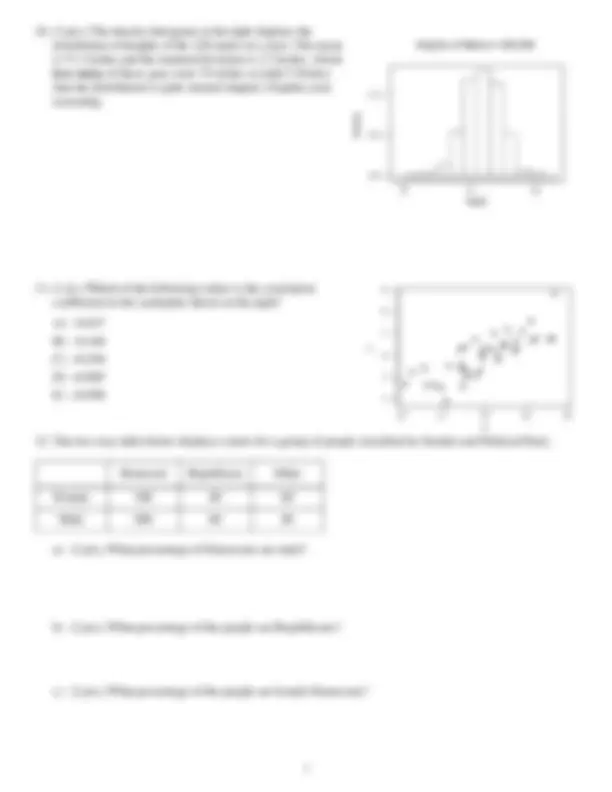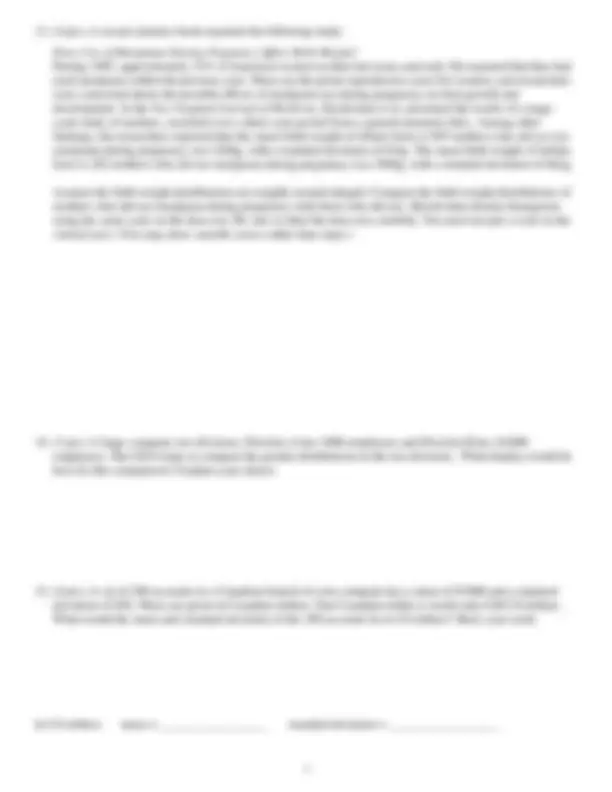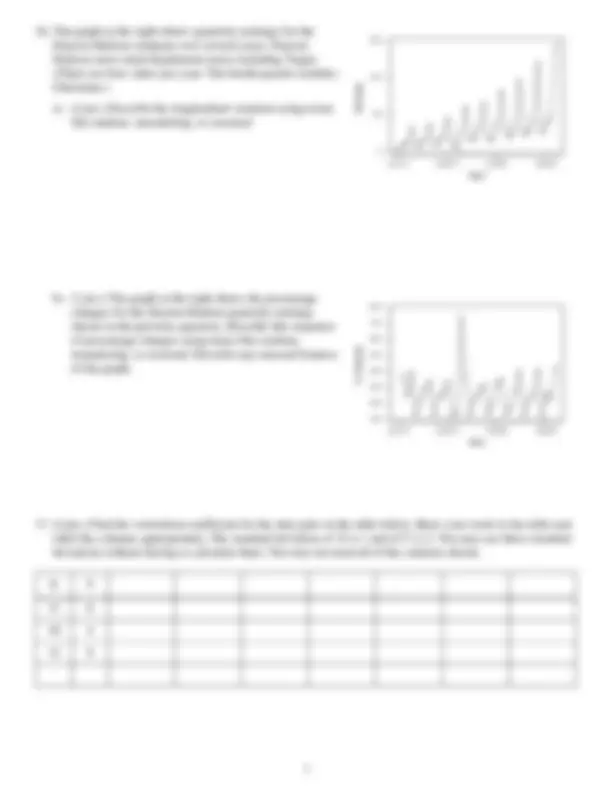





Study with the several resources on Docsity

Earn points by helping other students or get them with a premium plan


Prepare for your exams
Study with the several resources on Docsity

Earn points to download
Earn points by helping other students or get them with a premium plan
Community
Ask the community for help and clear up your study doubts
Discover the best universities in your country according to Docsity users
Free resources
Download our free guides on studying techniques, anxiety management strategies, and thesis advice from Docsity tutors
This document consists of a collection of exam questions related to the comparison of longitudinal and cross-sectional data. The questions cover various topics such as data types, designed experiments, surveys, pareto diagrams, mean and standard deviation calculations, stem-and-leaf plots, and correlation coefficients. Students are expected to demonstrate their understanding of these concepts through problem-solving and interpretation.
Typology: Exams
1 / 7

This page cannot be seen from the preview
Don't miss anything!




Please circle one. Section: 11:30, 12:30 or 2:
Please enter all of your answers on these exam pages. There are 17 questions on this part. A Defective Question Report is handed out separately.
a) (1 pt.) The pulse rates of patients getting their physicals at Mercy Hospital on February 12, 1999. Cross-sectional or longitudinal? b) (1 pt.) Weekly salary for Jon Dough at McDonalds from June 1995 through January 1999. Cross-sectional or longitudinal? c) (1 pt.) The ages of the women in this class today. Cross-sectional or longitudinal?
A) True B) False
A) True B) False
Stem-and-leaf N = 25 Leaf Unit = 1. 0 3 0 59 1 1 1 5 2 2 2 557789 3 011223334 3 5689
What is the median of the distribution? median = ______
standard deviation = _________
b) (1 pt.) Which of the two has the larger range? Explain your answer.
Data y − y (^) ( y − y )^2
10
20
15
103.5 104.5 105.5 106.5 107.5 108.5 109.
Dataset
Dataset
Does Use of Marijuana During Pregnancy Affect Birth Weight? During 1985, approximately 31% of American women in their late teens and early 20s reported that they had used marijuana within the previous year. These are the prime reproductive years for women, and researchers were concerned about the possible effects of marijuana use during pregnancy on fetal growth and development. In the New England Journal of Medicine , Zuckerman et al. presented the results of a large- scale study of mothers, recruited over a three-year period from a general prenatal clinic. Among other findings, the researchers reported that the mean birth weight of infants born to 895 mothers who did not use marijuana during pregnancy was 3260g, with a standard deviation of 616g. The mean birth weight of infants born to 202 mothers who did use marijuana during pregnancy was 2980g, with a standard deviation of 662g.
Assume the birth weight distributions are roughly mound-shaped. Compare the birth weight distributions of mothers who did use marijuana during pregnancy with those who did not. Sketch their density histograms using the same scale on the data axis. Be sure to label the data axis carefully. You need not put a scale on the vertical axis. (You may draw smooth curves rather than steps.)
In US dollars: mean = __________________ standard deviation = __________________
b) (3 pts.) The graph at the right shows the percentage changes for the Dayton-Hudson quarterly earnings shown in the previous question. Describe this sequence of percentage changes using terms like random, meandering, or seasonal. Describe any unusual features of the graph.
3-31-75 12-26-77 9-22-80 6-20-
0
50
100
150
Date
Earnings
1 2 3
4 1 2^3
4 1 2
3
4
(^1 )
3
4
1 2
3
4
1 2
3
4
123
4
1 2
3
4
1
23
4
3-31-75 12-26-77 9-22-80 6-20-
100
200
300
400
500
600
700
800
Date
% Changes 2 3
4
1
2
3
4
1
2 3
4
1 2
3
4
1
2 3 4
1
2
3 4
1 2
3
4
1
2 3
4
1
(^2 )
4
Name:_____________________________________________________________________ Section:_______________________
If you believe that a test question is defective in some way, please list y our complaint here. All complaints will be considered in our interpretation of the test results.
Question number: _____ Your complaint:
Question number: _____ Your complaint:
Question number: _____ Your complaint: